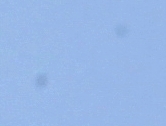|
|
Sensorcleaning on digital SLR (single lens reflex camera)

for zooming to image detail 1:1 of Peace-
angel please click on the photo | Dust or dirt on the Sensor of digital SLR cameras can rapidly limit the fun of photographing. On the left side you see the dramatic Sensor polution of a brandnew, original packaged Canon EOS 5d mark II bought at Photo Nuerbauer, Munich Germany.
Unfortunately, Canon delivers brand-new digital SLR cameras with such defects to poor customers like me. The sad thing is that the Canon quality control does not notice such strong sensor pollution 
I found 21 of these pollution spots in every Canon EOS 5d mark II photo (please see partial section on the left).
The repeated cleaning by the Canon service brought long term no improvement any more nor blowing or vacuuming of the sensor - the camera integrated Sensorcleaning Canon also fails. |
Possible reason: The sensor pollution is not simple "home" dust. The Canon sensor also gets dirty, even though you never perform an lens change !
Finest particles from the mechanics of the digital SLR Canon camera (lubricants, graphite, carbon, abrasion from the shutter mechanism) cause the pollution. Cleaning with ruthless methods (potential risk of damaging the sensor) like sensor wet cleaning or stripping with disco movie is required.
I felt this stress permanently as too big. So I resigned and returned my brand new Canon EOS 5d mark II after two unsuccessful repairs (BGB § 439 remedy, paragraph 1) back to the photo store.
How can I test the sensor pollution of my digicam ?
Large dust particles can be seen immediately but the fine particles from the mechanics of the camera (Lubricants, graphite, abrasion from shutter) as occurred by my Canon, are not so easy to recognize. The visibility of dirt particles is lens aperture depending and changing on focal distance.
Just shoot a photo against the blue sky with lens aperture greater 11 and focal length greater 100 mm. Additional slightly overexpose the photo. If sensor pollution can be identified and the guarantee of the camera is still running, then quickly send to the customer service. The Canon Customer Service (Gima, Munich) has said they would clean the sensor only half a year for free - after that sensor cleaning will get expensive ...
When a dust grain lies only loosely on the sensor, vacuuming with the "Green Clean" sensor cleaning kit may help. |
Tips for Digital Image Projection:
What resolution should the digital projector (beamer) at least have to feel a projected image as sharp and pixel-free ?
A rule of thumb states that the viewing distance should be similar to the screen size to capture the whole picture at a glance.
If You go closer, the eye loses in detail.
Photo technically, an image from the distance of its diagonals is considered perceived as sharp when the blur of a point (circle of confusion diameter) corresponds to less than 1/1500 of the image diagonal. This value is derived from the resolution of the human eye, with around 0,075 degrees.
The table shows the optimal viewing distance depending on the image size and beamer resolution:
| | Projektion | |
|
|---|
| | Width: | Height: | Diagonale: | |
|---|
| | 2,4 | 1,8 | 3,0 m | |
|---|
| Resolution in pixels | Mega
Pixel | optimal
viewing distance |
|---|
| SVGA | 800 | 600 | 1000 | 0,5 | 4,5 m |
| XGA | 1024 | 768 | 1280 | 0,8 | 3,5 m |
| SXGA | 1280 | 1024 | 1640 | 1,3 | 2,7 m |
| UXGA | 1400 | 1050 | 1750 | 1,5 | 2,6 m |
| 1600 | 1200 | 2000 | 1,9 | 2,3 m |
Thus, a projector with approximately 1.3 million pixels (SXGA resolution) is sufficient for the considered optimal distance from photo regardless of the image size to look sharp.
|

